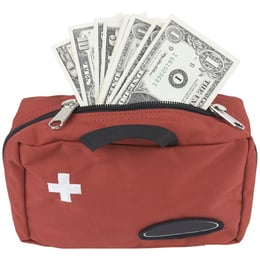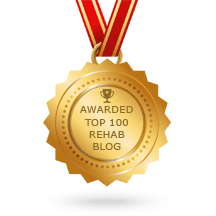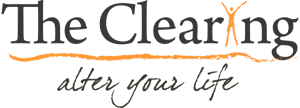 If you've come to the realization that Residential Rehab is the best way to heal from an addiction, you've come along way. Residential Treatment helps remove a person who is struggling from an environment that is usually distracting and triggering, and sometimes toxic. Now, it's time to ask yourself some important questions to help you select the right program for you.
If you've come to the realization that Residential Rehab is the best way to heal from an addiction, you've come along way. Residential Treatment helps remove a person who is struggling from an environment that is usually distracting and triggering, and sometimes toxic. Now, it's time to ask yourself some important questions to help you select the right program for you.
The following are some key factors to consider when choosing a residential addiction treatment program. Each of these factors impact cost in different ways, so consider what’s most important to you, and what you can afford:
- Treatment Modality
- Dual Diagnosis Treatment
- Group and Individual Counseling
- Rehab Amenities
What is the Treatment Modality?
Treatment modality is basically the approach and tools that are used to treat a given condition. There are many different modalities in addiction treatment. At a broad categorization level, you can think about programs that employ the 12-Step approach vs. those that employ a non 12-Step method (also known as a 12-Step alternative).
It’s important to clarify exactly what distinguishes excellent rehab programs. Most residential rehab providers in the United States are based around the 12 Steps modality / model. 12 Step programs do work for some people, but their overall success rates are low. In a 2014 Radio Boston interview, Harvard researcher Dr. Lance Dodes cited the AA success rate as 5-10%.
There are many other addiction treatment modalities spanning the gamut, including various psychology based approaches, medication, aversion therapy, faith-centered, and many more. Do your homework and have an understanding of what fits your beliefs and situation.
Do You Need a Dual Diagnosis Treatment Center?
One circumstance where the 12 steps may be less effective, and it’s increasingly common, is dual diagnosis - defined as addiction along with a mental health condition such as depression, anxiety, self loathing, suicidal ideation, and issues around trauma or loss.
12 Step programs generally are not as effective when a dual diagnosis condition exists, since most of them don’t offer much individualized professional counseling.
If you or your loved one has a dual diagnosis condition, researching and investing in a specialized dual diagnosis treatment center is crucial. Ask questions and don’t assume that a treatment program offers sufficient support just because it lists dual diagnosis on its website.
In order to be effective, dual diagnosis treatment must address the underlying core issues of addiction, help break the addictive cycle, and offer concrete, measurable professional supports.
Group and Individual Mental Health Counseling
The amount and type of counseling provided is a key driver of rehab cost. When it comes to healing from addiction, what really matters is individualized therapy. You'll have a much better chance of true recovery in a program that prioritizes one-on-one counseling.
 When asking about counseling, it's important to know that no one counseling strategy works for every issue.
When asking about counseling, it's important to know that no one counseling strategy works for every issue.
There are great counseling strategies for mental-level issues; these are issues that are caused by our judgments and limiting beliefs.
There are different counseling strategies that work at the emotional level; this is what we feel. A great mental-level strategy will not heal an issue at the emotional level. We can’t think our way out of an emotional level issue.
When you are looking at a program, ask them not only how much counseling you'll receive but also what strategies they'll use for mental-level issues vs. emotional-level issues.
That said, group therapy can be effective as well. Group sessions give you the opportunity to relate with others on a similar healing journey. In the best groups, participants practice healthy communication skills, share stories, set boundaries, and support one another in recovery.
In summary, group therapy is a helpful tool, but not if it’s used at the exclusion of individual therapy. One-on-one therapy time is vital if there are unresolved mental health issues involved in the addiction. (And as you now know, there are almost always underlying issues!)
Inpatient Residential Rehab Amenities
There is a large gamut of rehab amenities available. These include things like physical location, views, buildings, pools, spas, gymnasium, privacy, food, and much more.
When it comes to rehab programs, ask yourself where the money is going … amenities or healing? True, the spa might provide relaxation, but it’s not going to help you address the underlying core issues that are fueling an addiction and holding you back from recovery.
But also be careful of low cost programs. While you may recognize that luxury is not the top priority in recovery, you also don’t want to be uncomfortable. Residential inpatient rehab generally lasts a minimum of 28 days, which is a long time to deal with a sore back, noisy roommate, or poor food options.
In our view, the most “important amenities” for  residential rehab are:
residential rehab are:
- Private Rooms - you need time and space for privacy, restful sleep, and emotional processing
- Comfortable Beds - it’s very hard to bring your best self forward if you haven’t had sufficient sleep
- Healthy Food - diet has a dramatic effect on your energy levels, attention span, and overall health
- Peaceful, Distraction-free Environment - that’s what’s most conducive to personal reflection and inner work
Cost of Inpatient Residential Addiction Treatment
Why do some rehab programs cost so much more than others?
Simply put, it’s because the amenities, quality and content of rehab programs varies widely. Treatment facilities themselves fall into distinct cost categories from bare-bones basic to over-the-top lavish.
At some rehab programs, participants receive a state-mandated minimum level of individualized counseling hours. Depending on where the facility is located, that minimum may be shockingly low. At other programs, participants have over four hours of individualized therapy per day!
 Assessing rehab cost ranges for providers that meet your needs
Assessing rehab cost ranges for providers that meet your needs
What can you expect in terms of cost for inpatient treatment?
For $0 - $10,000 per month, you can access government-funded public service programs, which almost always use a 12 Step model. The amenities will be basic at best, and you’ll likely be moving through treatment with people who are court-referred and/or homeless.
For $10,000 - $20,000 per month, you can start looking at private-pay and private insurance-based programs; the vast majority will be 12 Step based. The out-of-pocket portion will vary depending upon your insurance coverage. These rehabs offer an institutional experience with little personalized programming, and they often support individuals who have chosen rehab instead of jail time.
For $20,000 - $45,000 per month, you have more options. You may be able to find a program that provide a significant amount of individualized attention and value, along with better amenities. You’ll also see a few 12 Step Alternative programs such as The Clearing.
For $45,000 - $65,000+ per month, you’ll have access to a wide variety of 12 Step programs and 12 Step Alternatives too. You’ll likely see a great deal of luxurious amenities, but as always, you’ll want to investigate the therapeutic program carefully.
Check out our post Rehab Prices: How Much Does Inpatient Residential Treatment Cost? for a detailed overview of what you can expect from rehabs of various price points.
Consider the four key factors we've outlined and choose the program that's best for you. If you find that the program you need is not covered by insurance or out of your price range, check out these creative financing ideas.
Remember, even a free program is no bargain if you leave the same way you came.
Related Resources
Here's a handy (free) worksheet you can use to help think through the important factors in choosing a rehab:
Worksheet: Choosing A Rehab That's Right For You



